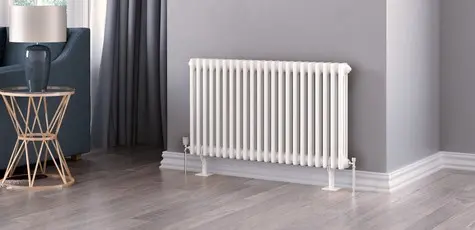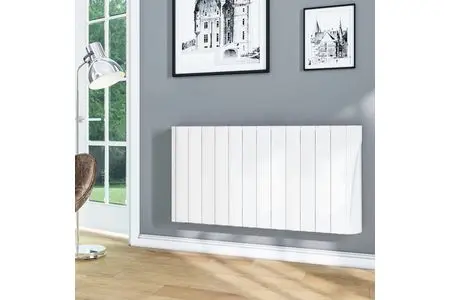 Free delivery on orders over £75 ex VAT
Free delivery on orders over £75 ex VAT Free click & collect from branches nationwide
Free click & collect from branches nationwideRadiator Selection and Placement Guide
Selecting and installing the right radiators can be a challenging task. Even the most seasoned plumber can sometimes use a helping hand with staying up-to-date with the latest radiator products and installation best practices.
Whether you’re working on a new build, a renovation, a commercial project, or anything in between - this guide serves as a helpful refresher on the modern radiators available to install, and the best practices to keep in mind when planning where to put them.
Which Radiator Type Should I Choose?
It’s important to educate yourself and your customers about the types of radiators available, and provide detailed information and advice about the most effective types for their build or renovation.
Column Radiators
Column radiators are, as the name suggests, constructed using metal columns made from steel or cast iron. Their unique style can be compatible with period refurbishments, or add style to modern buildings - whether domestic or commercial.
Column radiators are one of the most versatile radiator types available. They come in two, three, or four column configurations, and are available in a wide variety of widths and heights to suit any room.

Central Heating Radiators
Central heating radiators consist of single panel, double panel, and double panel plus radiators that are commonly seen in modern homes. Their simple, inoffensive, neutral design means they fit in just about any room, and match virtually every style.
- Single panel radiators are slim and compact, making them ideal for smaller rooms such as hallways or bathrooms.
- Double panel radiators offer twice the panels for greater heating effectiveness, at the cost of slightly increased radiator depth.
- Double panel plus radiators offer powerful heat output and excellent heat efficiency, making them ideal for larger rooms with high heat loss.
Designer Radiators
If your customer is looking to add a touch of beauty and elegance to their home, they’ll want designer radiators. They act as a contemporary alternative to standard panel or column radiators, and can enhance existing styles and décor.
Designer radiators are available to suit any room, and are available in horizontal or vertical configurations.
Energy Efficient Radiators & Smart Radiators
Energy efficient radiators have seen a remarkable rise in popularity in recent years, due to an overwhelming consumer desire to reduce energy usage. They generally use less fluid than standard radiators, meaning less energy is required to heat them up.
Energy efficient radiators often come with smart capabilities - meaning they can be individually controlled via a smartphone or smart hub. Be aware that your customers may want you to set this up for them.
Smart radiators are packed with energy-saving features, such as open window detection, presence detection, and individual temperature control - meaning customers only need to heat the rooms they’re currently using.

How Many Radiators per Room?
Working out the optimal number of radiators required for each room was once a guessing game that could only be overcome with years of plumbing experience.
Fortunately, this is no longer the case. Our handy BTU calculator takes the guesswork out of fitting radiators by calculating the BTU requirement for each room, giving you the overall BTU needed for optimal heating.
Simply enter the dimensions for each room along with a few basic details about the room, and you’ll get an accurate BTU figure.
This allows you to make informed decisions regarding the perfect radiator types, sizes, and room placements for any installation or renovation project, and can provide efficient results for your customers. Click here to visit our BTU calculator.
Where Should Radiators be Placed in a Room?
It’s important to place radiators correctly, as it can make all the difference to the temperature and ambiance of a room.
The main things to keep in mind are:
- Window placement
- Aesthetics
- Heat output
Should Radiators be Placed Under Windows?
Traditionally, radiators were placed under windows to counteract the cold air coming in through them.
With modern insulation, this is no longer a strict requirement - however older homes with single glazed windows may still require radiators under the windows.
Even new, well-insulated homes may still call for a radiator under the window. Furniture usually isn’t placed under windows - making it a logical space-saving choice for your customers.
Should Radiators be in the Coldest Part of a Room?
Physics dictates that if you can work out the coldest part of a room, it’s wise to place a radiator there.
This is because cold air causes more effective heat conduction, helping warmth spread towards the middle of the room.
Again, modern insulation means this isn’t a strict requirement. If a customer lives in a well insulated house, radiators can be placed wherever best suits their design and aesthetic ideas.
With all major radiator types available from a plethora of trusted brands, City Plumbing is the place to go when stocking up for your installations.
Save additional time and money by opening a trade account - giving you access to handy job lists and free delivery on orders over £50 - or free click & collect from hundreds of branches nationwide at a time that suits you.